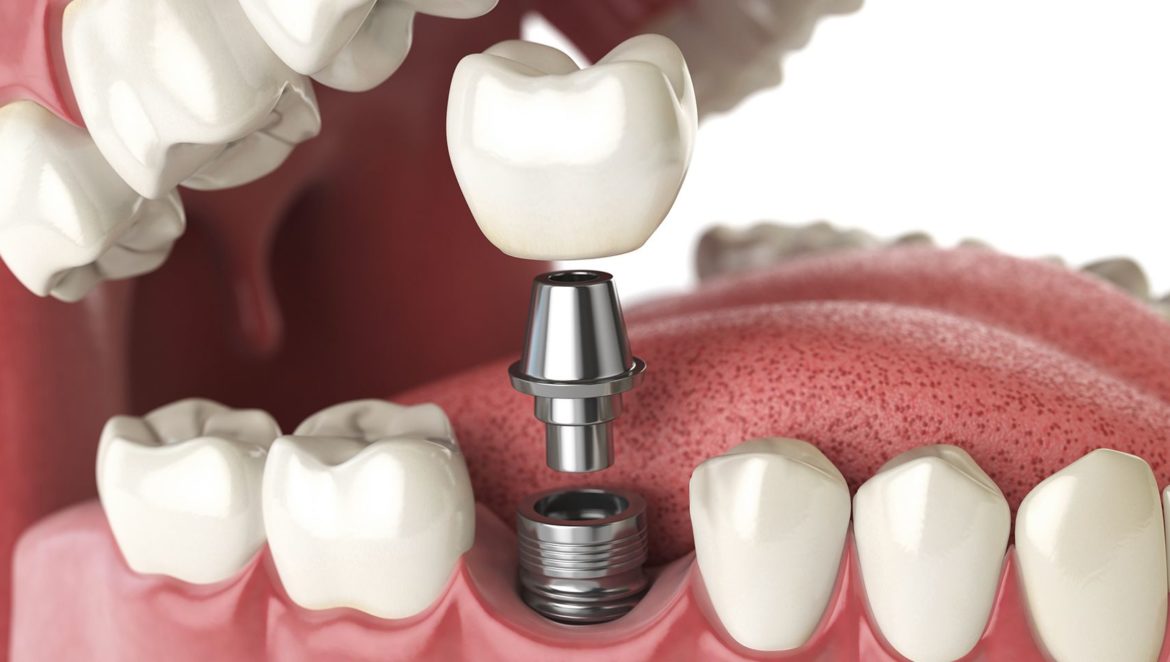December 14, 2018
Choosing to get a
dental implant is an important decision. Knowing how the procedure is generally done and what a typical treatment plan entails can help you to make the best decision you can. In brief, the treatment plan involves replacing the tooth roots with a metal post, typically aluminum, that resembles a screw. Attached to that are an abutment and a crown, and it functions essentially as a natural tooth.
Dental implants are a great alternative to
dentures or bridgework., which may slip or click.
There are a number of factors that change how the surgery is performed. These factors include the type of implant that is going to be used, the condition of the jawbone and how much available bone tissue is present and how soft it is. Your doctor will work with you to make a detailed treatment plan that covers all the specific in’s and out’s of your personalized treatment plan.
A dental implant is an excellent option for patients that are missing one or more teeth, as well as having the needed amount of bone structure for the implant to be set in. Having healthy oral tissues is a must, as well as a willingness to commit to a potentially multi-month-long process of healing and recovery. However, a dental implant is a lifelong investment, as unlike conventional dentures and bridgework, they do not need to be replaced every five to ten years. There can be no slippage or clicking with a dental implant, as it fuses directly to the jawbone, just like a natural tooth root.
Preparing for the Surgery
The entire dental implant surgery process often requires more than one surgical procedures, so a thorough evaluation by your dentist is necessary and required to prepare for the process. This evaluation can include any of the following:
- A comprehensive dental exam in which you get x-rays taken and models of your teeth and mouth are made.
- A treatment plan in which all the factors going into your specific treatment is laid out and considered by your dentist.
- Input from dental specialists to assess if a bone graft or other preparatory measures are needed.
Tell your dentist about all medications you are currently taking, including any over-the-counter drugs and supplements you take. Also, be certain that your dentist knows of any preexisting medical conditions you may have, so they can account for them during the course of treatment. Your dentist may prescribe antibiotics before the surgery to prevent infection.
During the surgery, you may have multiple options for anesthesia which can include options such as a local anesthesia, sedation, or general anesthesia. Be sure to discuss with your dentist which option you feel most comfortable with. Keep in mind that If you choose to go with general anesthesia, be sure to plan to have someone take you home after the surgery so you can spend the rest of the day resting.
How the Surgery is Performed
Typically, a dental implant surgery is an outpatient surgery performed in a few stages. The first step is to remove the damaged tooth or teeth if still present in the jaw. The patient’s jawbone is then made ready for the surgery. This may involve getting a bone graft if the patient’s jaw is too thin, or not hard enough.
A bone graft may be necessary because the chewing exerts powerful forces on your jaw and mouth, and if your jaw cannot support the implant, it will very likely fail. A bone graft, generally taken from another part of the body, may require additional months recovery as they wait to have it heal.
The next step is to place the metal post of the implant into the jaw. This requires an additional visit if you needed to get a bone graft. Following this is a healing period that may take many months. It is because of this healing period that dental implants are only recommended for patients in good health.
The healing process is for the jaw to grow around the implant to secure it into place, just like a natural tooth root is secure in your jaw bone. The length of this process varies depending on the patient.
Next, the oral surgeon will place what is called an abutment. An abutment is the part of the implant which allows the crown of your new tooth to be attached to the implant. In some cases, if the jaw is strong enough and the implant is very stable the abutment can be attached at the same time as the implant is placed.
Finally, after the soft tissue heals the creation of the new tooth begin after molds of your jaw and teeth are taken. Once the crown is ready, it is placed and now have a brand new tooth! The process takes many months, most of which are devoted to recovery and healing.
It is very common to experience significant swelling and discomfort in the area of the surgery. Symptoms can include swelling of the face and of the gum tissue, bruising of the same areas, pain at the implant site, and minor bleeding. Your dentist may prescribe you pain medication to help manage your pain. If the swelling worsens or there is any other problem after the surgery contact your oral surgeon.
You may also have to stick with soft foods for a while as your jaw recovers, but the investment is worth it. You now have a new tooth, that can relieve you of all the hassle that comes with dentures and bridgework.
Why Do I Want an Implant?
An implant is not like a denture or bridgework. It is a replacement tooth. While the surgery may be involved, the return means a lifetime of use. It will look and function exactly as a natural tooth does, and won’t require special cleaning or often for you to remove it as some denture types require.
Practicing good dental hygiene means that your implant will last many decades. Refrain from smoking, which is especially damaging to the mouth, and practice excellent oral hygiene. Use a soft-bristled brush and brush at least twice a day and floss at least once a day. Avoid damaging your teeth by not chewing on hard materials, like ice or hard candy. See your dentist at least twice a year for a checkup and your teeth will last a lifetime.


